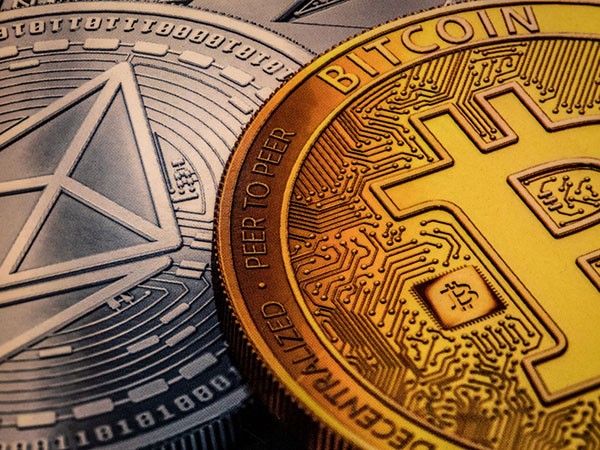Let’s delve into the recent developments surrounding bitcoin that have thrust it into the limelight – the emergence of new cryptocurrency exchange-traded funds (ETFs).
Cryptocurrency represents digital currency safeguarded by a specialized form of public ledger known as blockchain. Operating without a central authority such as a government, this transparent digital ledger meticulously records peer-to-peer transactions. Bitcoin, introduced in 2009, emerged as the pioneering widely accepted cryptocurrency. Due to its finite supply, bitcoin has enticed investors as a speculative opportunity.
Landmark Approval: SEC’s Greenlight for Bitcoin ETFs
On January 10th, 2024, the U.S. Securities and Exchange Commission (SEC) achieved a significant milestone in the realm of cryptocurrency by sanctioning 11 spot bitcoin exchange-traded funds (ETFs). Notable industry players like BlackRock and Fidelity are among the entities offering these funds. This move has the potential to revolutionize cryptocurrency investment landscape and unveil fresh avenues for traders.
To comprehend the implications of this advancement, it is crucial to grasp the concept of spot ETFs. A spot ETF is a fund that directly mirrors the current, or ‘spot’, price of an asset, in this instance, bitcoin (BTC). In contrast to futures-based ETFs linked to contracts speculating on future asset prices, spot ETFs are supported by the real-time asset prices themselves.
Bolstering Confidence in Bitcoin Investments
Investing in a spot bitcoin ETF entails the fund acquiring actual bitcoins, with the investment’s value fluctuating in tandem with bitcoin’s real-time market price. These bitcoins are securely held by a custodian, with Coinbase serving as the custodian for eight out of the 11 spot bitcoin ETFs.
The introduction of spot bitcoin ETFs marks a significant shift by bridging the traditional financial domain with the burgeoning crypto market. This transition facilitates easier access to bitcoin investments for traders, eliminating the complexities and security risks associated with managing digital wallets or trading on cryptocurrency exchanges.
Enhanced Liquidity, Price Stability, and Wider Acceptance
A key advantage of these ETFs lies in the potential for heightened liquidity and price stability. As institutional and retail investors gain exposure to bitcoin through these funds, trading volumes are anticipated to escalate. This surge in trading activity could contribute to a more stabilized market with reduced price volatility, benefiting traders seeking to capitalize on incremental price fluctuations.
Furthermore, spot bitcoin ETFs have the capacity to foster broader adoption and recognition of bitcoin as a legitimate asset class. With the SEC’s endorsement, investor trust in bitcoin may strengthen, potentially driving up demand and consequently, prices.
This mirrors the trajectory of gold ETFs, which substantially boosted gold demand and long-term price stability.
Bitcoin ETFs vs. Futures Contracts: Simplified Investment Access
Bitcoin ETFs streamline the process of investing in bitcoin for casual traders and retail investors. Unlike futures contracts tied to bitcoin’s price that necessitate oversight of settlement dates and delivery complexities, an ETF functions akin to a stock, tracking an underlying index price—in this scenario, the bitcoin spot price.
ETFs offer straightforward exposure to bitcoin’s price fluctuations without the need to directly purchase crypto from an exchange or wallet, thus circumventing storage and security challenges. Investors can seamlessly buy and sell ETFs like stocks through a standard brokerage account.
The ETF model broadens the scope to encompass mainstream investment funds, retirement accounts like 401ks, and novice stock enthusiasts—not just specialized futures traders. This significantly expands the pool of potential bitcoin investors.
The rollout of ETFs coincides with another pivotal event for bitcoin prices: halving day.
Demystifying Bitcoin Halving Day
Bitcoin mining is the process through which new coins are generated, and verified transactions are added to the blockchain ledger. Miners compete to solve intricate mathematical puzzles and earn rewards for each block added. Initially, successful bitcoin miners received 50 BTC per block as an incentive for mining activities. However, bitcoin has a capped supply of 21 million coins.
To regulate the supply until the cap is reached, mining rewards diminish by 50% every 210,000 blocks mined. This predetermined halving of mining rewards occurs roughly every four years, with the upcoming halving day projected for April 2024.
When halving days curtail the influx of new bitcoins, basic economics come into play. With demand persisting or growing while supply dwindles, prices typically ascend. This anticipation often fuels speculative investments leading up to the halving day.
Influence of Halving Day on Supply and Prices
Even in the absence of ETF news, the upcoming ‘halving day’ for bitcoin in April 2024 suggests that this inherent scarcity could propel prices upwards in the ensuing years.
While cryptocurrencies inherently carry risks and uncertainties, the prospect of increased investor participation and financial institutions embracing bitcoin and its derivatives hints at a potential price uptrend. For daring investors, crypto ETFs present a more straightforward avenue to establish their stake in the market!

